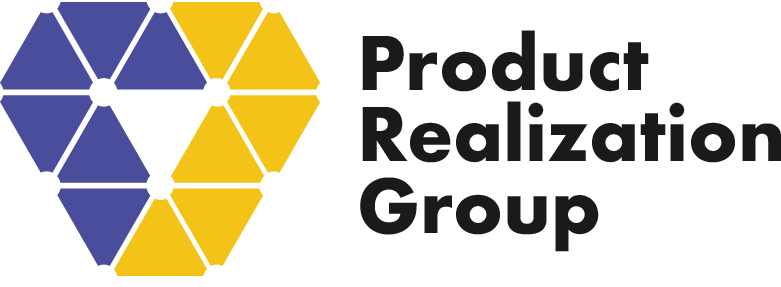
10. CONTROLLED INTRODUCTION, Part 1

In our previous blog post, we delved into the process of validating your product, and explored the essential testing procedures that your engineering teams should plan on to ensure your product meets all the requirements outlined in the engineering design specification.
Now, let’s focus on the next crucial stage: transitioning from engineering and beta units to high volume production along with getting your first products to customers for trials. A general rule of thumb is to start the contract manufacturer (CM) selection process once you have frozen the design and have a sufficiently complete set of documentation to support a quote. This process entails selecting a reliable CM, negotiating and finalizing a deal with them, and providing a comprehensive set of documentation and instructions to facilitate your product’s assembly. Continue reading to discover valuable insights on each step, which will guide you through the journey of introducing your product to volume manufacturing. We will cover the often important activities associated with first customer trials in another part of this series.
Contract Manufacturer Selection
Choosing the right CM is a crucial decision as it can impact the success of your product launch, quality of your product, and the profitability of your business as you scale into volume. Here are six key factors to consider when selecting a CM:
- Manufacturing Capabilities: Look for a CM that has experience in manufacturing products similar to yours. They should have the necessary expertise, technology, and equipment to meet your production requirements.
- Quality Standards: Quality is a critical factor to ensure customer satisfaction and to avoid product recalls. Make sure the CM has established quality systems, certifications (such as ISO), and processes in place to ensure that your products meet your specifications, regulatory requirements and quality standards.
- Location: The location of the CM can affect your labor rate, logistics, transportation costs, and lead times. You should consider whether you need a domestic or offshore CM based on your production volume, cost, and lead time requirements.
- Capacity and Scalability: Your CM should be the right “fit” for your business and have the capacity to meet your production needs as well as be flexible enough to scale up or down based on your demand. You should also consider their capacity to handle unexpected events such as supply chain disruptions or changes in demand.
- Cost: The cost of manufacturing is a critical factor that can impact your profitability. You should evaluate the CM’s pricing structure, payment terms, and any additional costs such as tooling or setup fees. Ideally, the cost structure should be transparent with a clear understanding of the markup.
- Communication and Collaboration: Look for a CM that has a dedicated project manager, transparent communication processes, strong data management tools, and a collaborative culture.
An experienced consultant can help you evaluate the above factors, identify potential risks and challenges, negotiate contracts, and manage the relationship with your CM. They can also help you optimize your supply chain, reduce costs, and improve the quality of your products.
Contract Negotiation
Once you have selected the ideal CM, it’s time to dive into the process of negotiating and signing a Manufacturing Service Agreement (MSA), which is a critical step in building a long-term relationship. A well-written agreement should address the following elements:
- Pricing: Negotiate favorable pricing that accounts for material, labor, and overhead costs. Be mindful of potential cost escalators such as currency fluctuations or material price increases.
- Payment Terms: Establish clear payment terms, including milestones for progress payments or discounts for early payments.
- Lead Times: Agree on realistic lead times for production and delivery, with provisions for potential delays.
- Intellectual Property (IP) Protection: Ensure your IP is protected through non-disclosure agreements (NDAs) and other legal safeguards.
- Liability: Clearly define responsibilities and liabilities for product defects, excess materials, recalls, or other issues.
- Tooling and NRE Charges: Understand and negotiate costs associated with tooling, fixtures, and any non-recurring engineering (NRE) expenses.
- Forecasting and Flex Fences: Establish a flexible forecasting system that enables you to adapt to changes in demand and provides for adjustments in production schedules.
- Change Management: Addresses Engineering Change Orders (ECOs) and how they will be handled. It should define the process for submitting ECOs, the review and approval process, and how any resulting changes will be communicated to all relevant parties. It should also address any potential cost and liability impacts of ECOs, such as additional tooling or material costs.
- Excess and Obsolete Material: Define the responsibility for managing excess or obsolete materials and outline the process for disposition or cost sharing.
- Process Improvement and Quality: Ensure the contract includes provisions for ongoing process improvements and quality management systems, such as ISO certification or other industry standards.
- Field Failures and Returns Management: Defines the process for identifying and reporting failures, how the CM will investigate and diagnose the issue, and how any resulting repairs or replacements will be handled. It should also address any associated costs, such as shipping or repair costs, and how these will be shared between the parties.
- Warranty Policy (Credit for Returned Parts): Clearly outline warranty terms, including the process for returning defective parts, credit or reimbursement policies, and any associated repair or replacement costs.
- Termination: Specify the conditions under which either party can terminate the contract, including notice periods, penalties, and the handling of any remaining work or inventory.
In parallel, let your legal department cover IP protection, indemnification, confidentiality, and any language to ensure your contract is clear and compliant with your state’s regulations.
Equally important, make a list of all of the OEM deliverables contained in the Manufacturing Service Agreement (MSA) to ensure there is an internal process to support what you have agreed to.
Sample deliverables include:
- Publish Monthly Rolling Production Forecast
- Release of Purchase Orders/Material Management Review
- Document Product Specifications/Change Control Management
- CM Program Management Review
Whether you work for a startup or an established company, it’s important to assign resources and focus on these deliverables, to ensure that the relationship is successful for both you and the CM.
Production Handoff
Now that you have a formal contract in place, it’s time to hand off your design package to production. A complete design package should contain all the information and documentation for your CM to source components, fabricate parts, assemble each sub-module, and test the final product.
Typical Design Package Components:
- Bill of Materials (BOM): A comprehensive list of all the raw materials, components, and sub-assemblies required to manufacture a product, including quantities and specifications.
- Mechanical Drawings: Detailed, technical diagrams illustrating the dimensions, assembly, and functioning of a product’s mechanical components.
- PC-board Layout Files: Electronic files containing the design data for printed circuit boards (PCBs), including component placement and interconnections.
- Assembly Drawings: Visual representations that show the sequence and method for assembling the product’s various components.
- High-resolution Artwork: High-quality images or graphics used for product labeling, packaging, or marketing materials.
- Quality Documents and Procedures: Written guidelines and protocols that detail the quality standards and control measures to ensure the product meets its specifications.
- Test Procedures with Pass/Fail Criteria: Step-by-step instructions for conducting tests on the product, accompanied by predefined criteria to determine whether the product passes or fails the tests.
- Final Test Criteria: A set of performance parameters and benchmarks that the product must meet or exceed to be considered ready for market release.
Ideally, this information is provided in digital or electronic format, so your CM can import all data into their Enterprise Resource Planning (ERP) and Manufacturing Execution Systems (MES). Don’t forget to include hardware design changes or software bug fixes in the design package that surfaced during your beta program.
In conclusion, successfully scaling up your production line requires careful planning and collaboration with your CM. By thoroughly researching CMs, negotiating favorable and fair terms, and providing clear documentation and instructions, you can set the stage for a successful high-volume production launch. Stay vigilant in monitoring the production process, hold regular business reviews, and maintain open lines of communication with your CM to address any issues that may arise to ensure a smooth transition to volume production.
In our next blog series, we’ll explore mechanical tooling options that will support your product’s successful development and scale-up into high-volume production, sharing insights and considering trade-offs between 3D printing, soft tooling, and hard tooling, each offering unique advantages and challenges. By understanding these differences, you’ll be empowered to make better informed decisions and select the best strategy to support your business.



